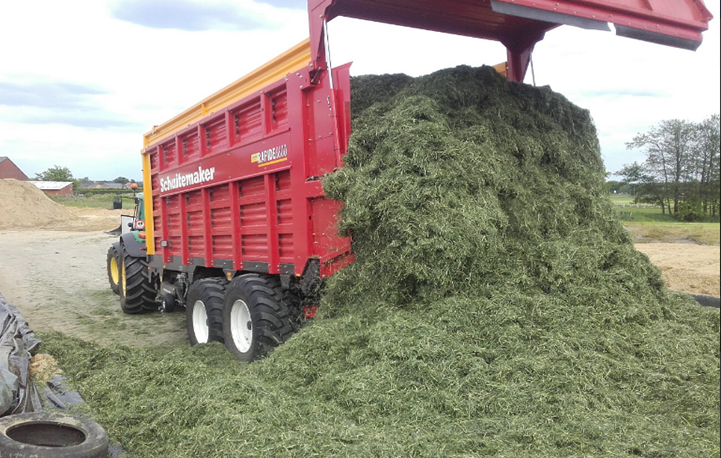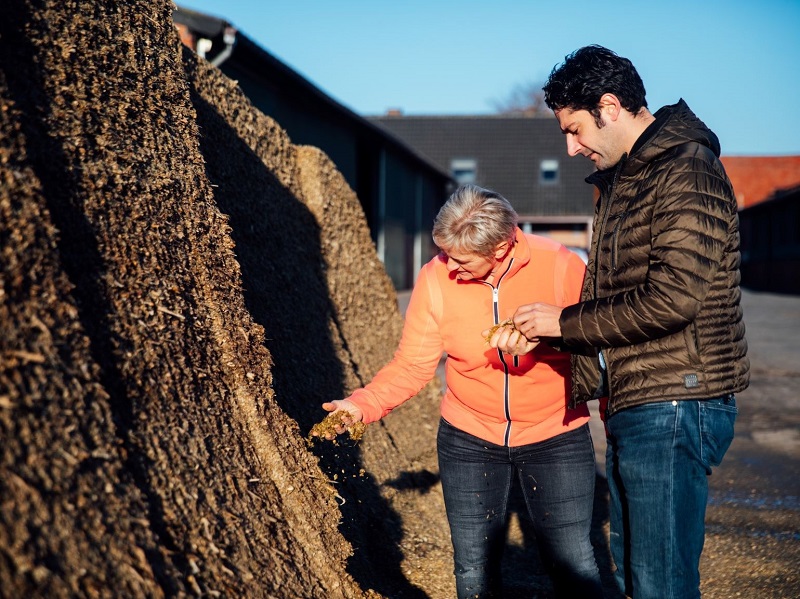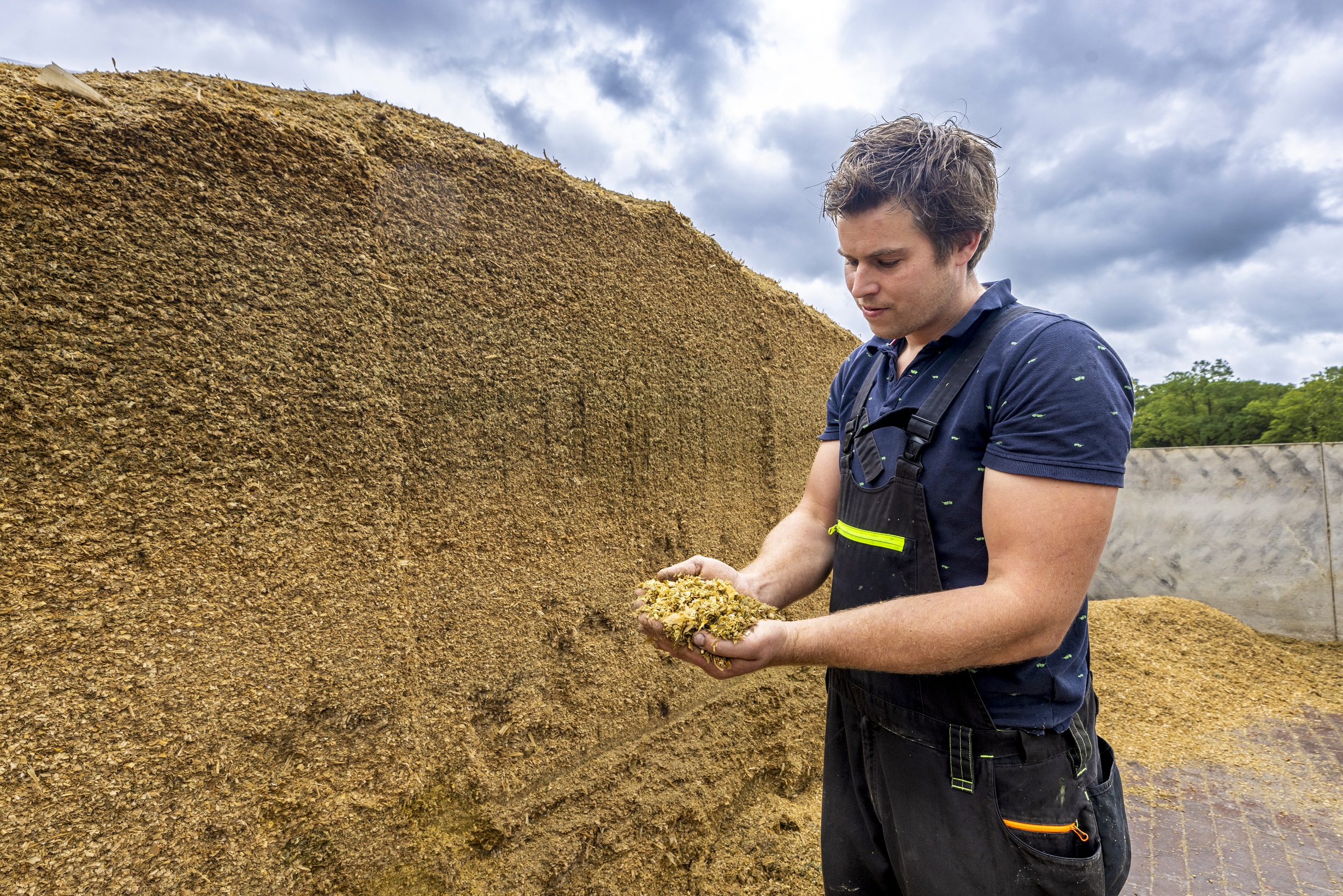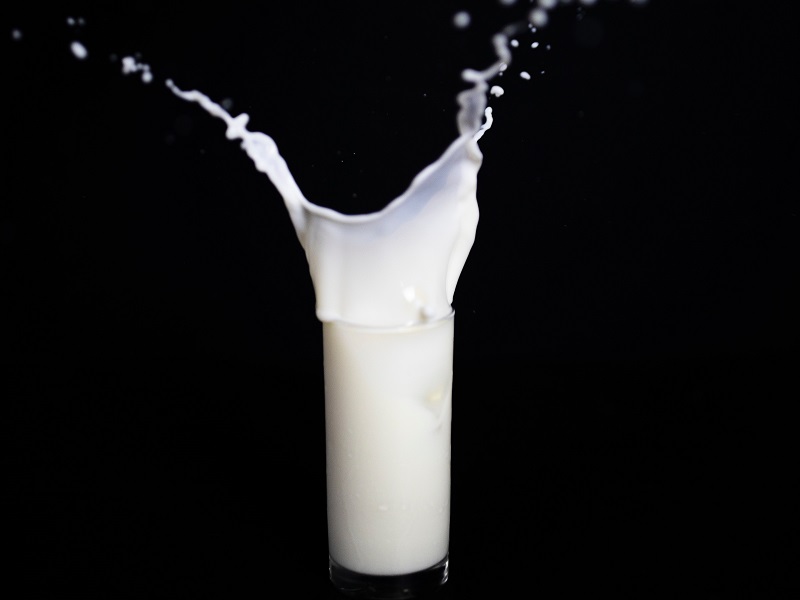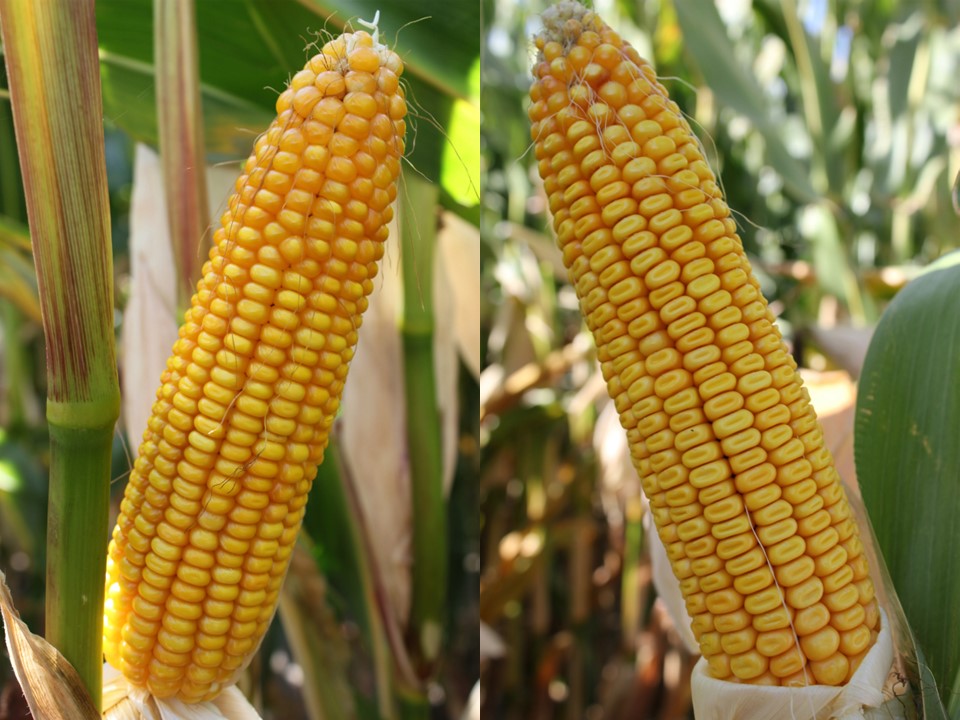In recent years, and certainly in recent months, there has been increasing concern about the whole nitrogen issue in the dairy industry.
It seems like nitrogen is the big societal bogeyman while we live in air that consists of nitrogen for about 78%, albeit in the inert form N2.
Important in this: our body contains not only a lot of water but also a lot of protein. Let precisely those proteins consist of a chain of amino acids, all twenty-two of which have the peculiarity of always containing an amino group where there is a nitrogen atom .
Nitrogen and Protein
So to grow feedstuffs with protein, we need nitrogen. The scientific relationship here is that with 1 kg of pure nitrogen you can make 6.25 kg of protein. If we want to start digesting protein in the cow, then it becomes a fascinating story. Read all about this in our previous article on the protein digestion in cattle.
Main conclusion: with its specific digestive system, a cow as a ruminant really starts to pay off by digesting invertible material for monogastrics (and therefore for humans as well) and even being able to recycle protein breakdown products from its own metabolism by creating an optimal environment in the rumen for microbial growth.
Relationship protein - feed profit: practical example
Farmdesk farms are always divided into three categories regarding their farm performance: the 25% least good farms qua feed profit in the FD bottom group, a middle group, and the 25% best farms in the FD top group.
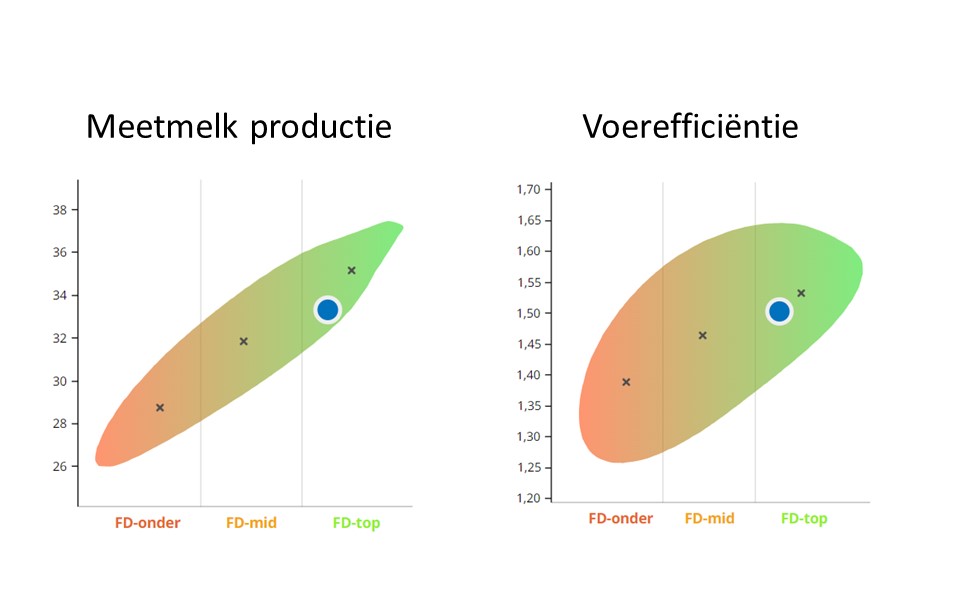
The above farm scores well in terms of measured milk production per day and also in terms of feed efficiency. Often these are parallel issues and there is also a clear link between milk production and feed efficiency on the one hand and farm performance on the other.
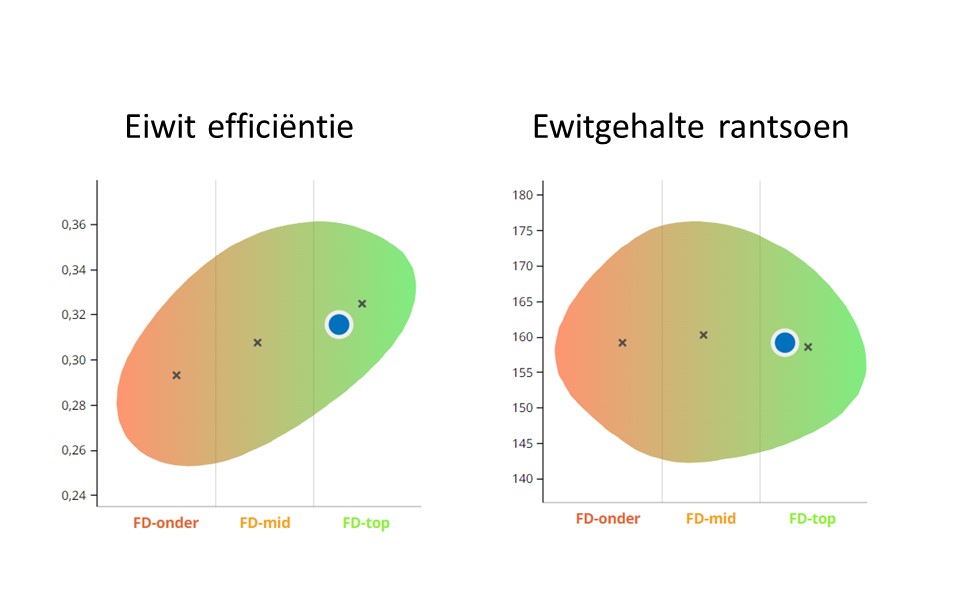
The figures above show the relationship protein efficiency (left) and protein content in the ration (right) to feed gain. Protein efficiency gives the grams of milk protein produced per feed protein ingested, and is ~29% at FD-below and ~33% at FD-top.
From these figures, we learn that feed profits on average increase with protein efficiency while the relation of protein content in rations to farm economics is realtively complex.
On average, the worst group in terms of farm economics has a lower protein content in the ration than the middle group, but the top group also milks with a lower protein content in the ration.
"Moral of the story: by squeezing at random on the on protein content in the ration, you run the risk of lower economic performance. While judiciously tweaking the protein content in the ration may well pay off from a business perspective as well."
Wim Govaerts
Feed management is the key
If we combine a sufficient protein supply with a good relationship between rumen protein and rumen energy, where the rates of digestion are aligned, efficient microbial intestinal digestible protein can be made which can be readily digested in the small intestine. Provided we then have sufficient glucogenic energy in the udder tissue, the absorbed amino acids can also be readily converted to milk protein.
However, the essential amino acids such as lysine and methionine are present in the blood in sufficient quantities. We can have these amino acids extracted by the cow from the feed and sometimes supplement ourselves if desired, but we can also, for example, have methionine made by rumen bacteria by providing sufficient sulfur in the ration. The sulfur supply can be controlled at the soil level by optimizing sulfur status and sulfur fertilization and correcting where necessary. If sulfur is tight in the ration, we can also add sulfur to feedstuffs that are absorbed by the cow.
In short: judiciously lowering the protein content in the ration, can give rise to a good environmental result that gequalizes with a good farm economic result if productivity and feed efficiency remain intact.
On the other hand, if low protein undermines feed efficiency, protein efficiency can also drop which can usually result in a worse farm economics because protein is a very expensive feed component.

